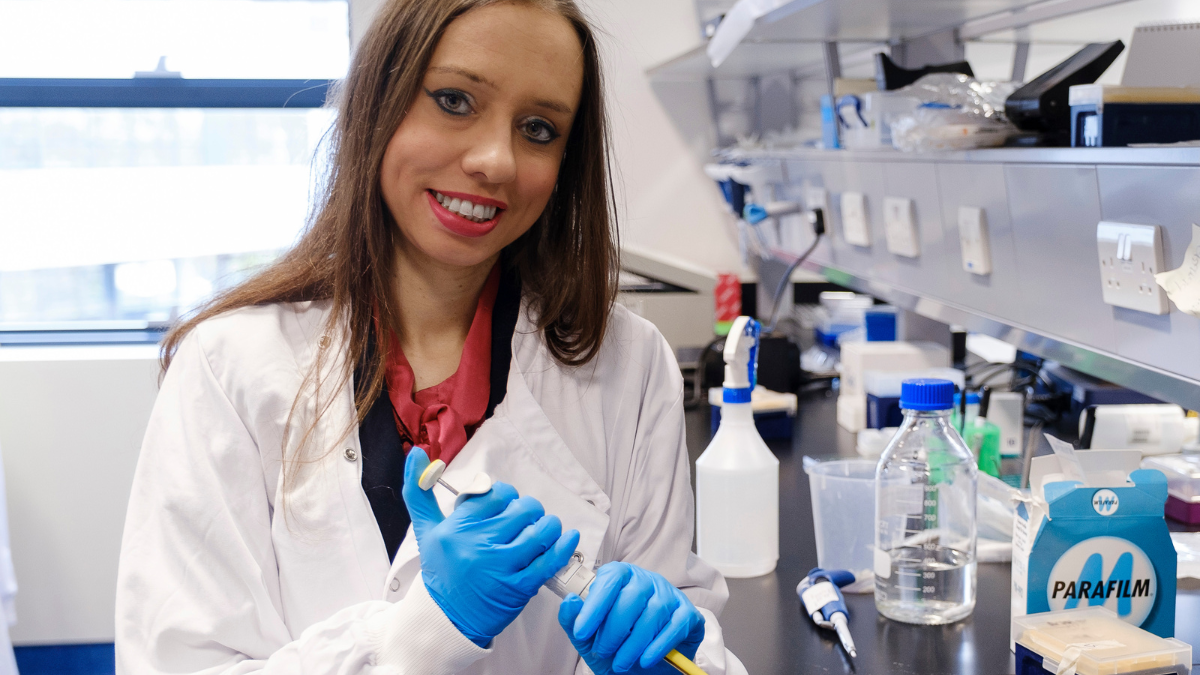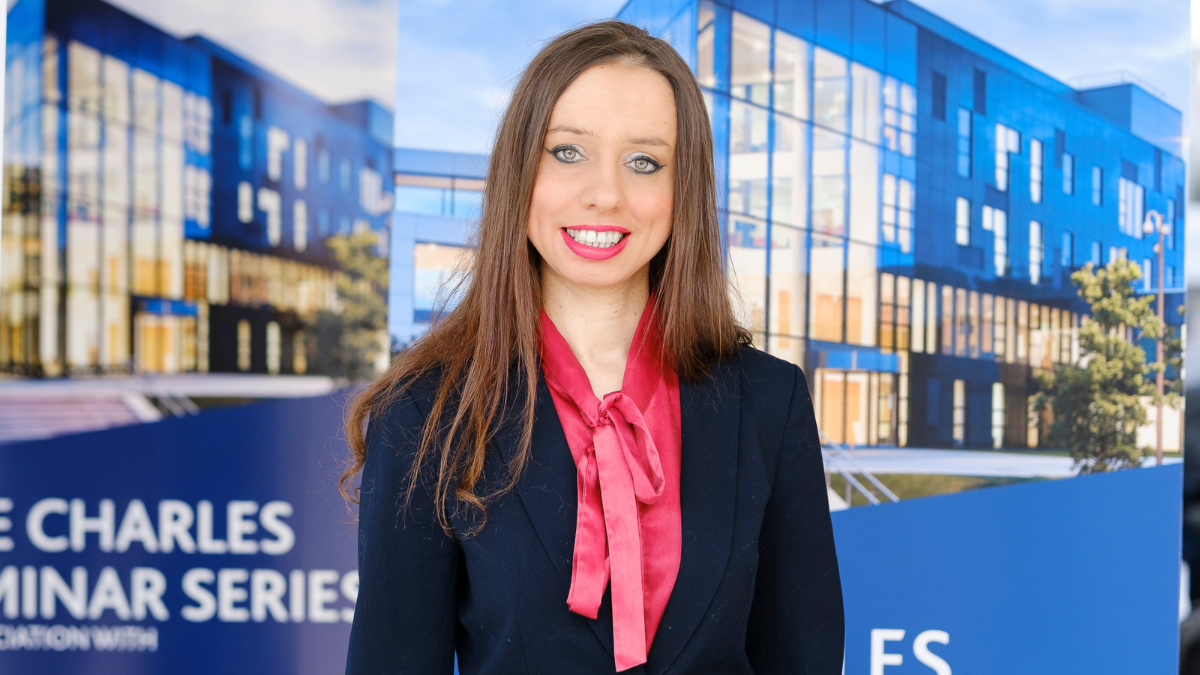
Epidermolysis bullosa (EB) is a devastating and incurable disease that causes painful blistering and itching of the skin. It is commonly known as ‘butterfly disease’ because of the extreme fragility of the skin of people with the condition – as fragile as a butterfly’s wing. In the most severe cases, even the slightest touch or friction can cause painful lesions and open wounds.
Although it’s a rare disease – on average 300 people in Ireland are living with EB at any given time – many of us have at least heard of it thanks to the awareness-raising and advocacy work of Debra, supported by the actor Colin Farrell and other celebrities.
But unfortunately for EB patients and their families, whose lives are profoundly impacted by the stress of chronic wound care and the threat of infection, rare diseases are often overlooked when it comes to the development of new drugs and therapies.
Hope on the horizon
Dr Joanna Stefan’s scientific curiosity led her from a PhD in molecular biology and medical sciences in the Jagiellonian University in Krakow to the University of Alabama in the United States, where she did postdoctoral research in the lab of Dr Andrzej Slominski, a world-renowned researcher in the field of dermatology. Her passion for experimental dermatology was ignited, and eventually brought her to UCD Charles Institute of Dermatology and the Sanofi Newman Fellowship in Dermatology.
Dr Stefan’s pioneering research into the molecular mechanisms of recessive dystrophic epidermolysis bullosa (RDEB) – one of the more severe forms of EB – has yielded a preliminary dataset that shows promise for the development of new treatments and therapies down the line.
The current therapeutic landscape for the disease is limited, as Dr Stefan explains: “The FDA recently approved two expensive therapies: a topical gel containing birch bark extract, which can cause allergic reactions, and a gene therapy with a lifetime cost of $15–$22 million per patient.”
For context, the associated healthcare costs for RDEB patients in Ireland are €100,000 per patient per year, and most of this goes on staff costs, bandages and dressings. “There is an urgent need to improve RDEB patients’ life opportunities,” concludes Dr Stefan. “The average lifespan of RDEB patients is approximately 30 years, with skin cancer a leading cause of premature death.”

Exploring the regenerative potential of hair follicles
Recessive dystrophic epidermolysis bullosa is caused by mutations in the gene responsible for the production of a protein called Col7A1. Belonging to the collagen family of proteins, which play a key role in maintaining skin integrity and elasticity, impaired production of Col7A1 in RDEB patients causes splitting of the epidermis from the deeper layers of the skin. The resultant blistering is similar to that caused by a burn. In the most severe type of the disease, this protein is completely absent.
While blistering can occur all over the body with this disease, the skin on the scalp often remains in a healthy state. With this in mind, Dr Stefan set out to investigate the potential of cells in the hair follicle – including fibroblasts and keratinocytes – as candidates for the development of a cell-based therapy for RDEB, based on their wound healing and skin maintenance properties.
Expanding the boundaries of research
For the first time ever globally, these cells were isolated from scalp hair follicles and scalp interfollicular skin samples from patients living with RDEB, and specifically from an Irish patient, collected at Our Lady’s Children’s Hospital, Crumlin (part of Children’s Health Ireland) with parental consent. In addition, Dr Stefan created a cell culture model of the most severe form of the disease by knocking out the COL7A1 gene using the CRISPR-Cas9 gene-editing technology.
Scalp hair follicle dermal sheath fibroblasts and scalp interfollicular fibroblasts show promise for the development of a new cell-based therapy through which the cells would be grafted onto blistering sites, where they would heal and regenerate the skin.
Furthermore, Dr Stefan discovered that when TGFβ2 – a type of protein known as a cytokine – was administered to the cell cultures, it increased the production of the Col7A1 protein and other collagens and inhibited the disease pathway of RDEB. The findings indicate that TGFβ2 or a related peptides may be potent candidates for future drug development.
This research lays the groundwork for new drugs and therapies that could transform the lives of people living with RDEB in the future.

UCD Newman Fellowship Programme
The UCD Newman Fellowship Programme supports ambitious research across the sciences and humanities. These prestigious postdoctoral fellowships are awarded usually for a period of 2 or 3 years and are only made possible by the support of generous philanthropic donors and the commitment of inspirational academic mentors who are dedicated to pushing the frontiers of knowledge in their chosen discipline. Dr Joanna Stefan’s research is funded by Sanofi, and she is supervised by Professor Desmond Tobin, UCD Charles Institute of Dermatology at UCD School of Medicine, and Dr Fiona Browne, Children’s Health Ireland.
“Epidermolysis bullosa is a rare genetic disorder affecting around 500,000 (or 0.00006%) of the world’s population. As a result, funding to support basic and translational research for this condition is very difficult to obtain. Thus, we were very grateful that Sanofi supported Joanna’s challenging and exploratory project, via the UCD Foundation Newman Fellowship scheme,” Professor Tobin said. “Results so far are very encouraging indeed, and may help to unlock the regenerative power of the scalp hair follicles in these patients. We hope to continue this exciting research journey via further funding opportunities and collaboration with Dr Fiona Browne and Debra.”

